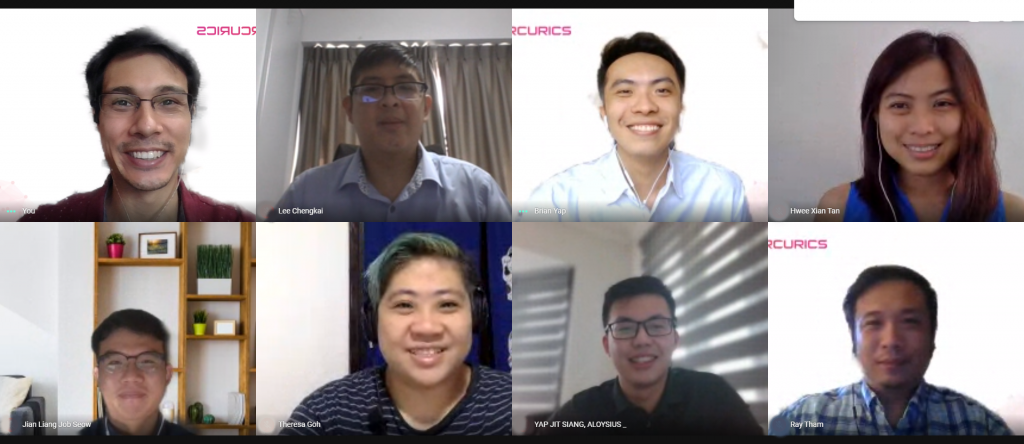Think about the last time you went somewhere new. Like most people, you probably used Google Maps and found your way around just fine. You could cut through HDB estates with little trouble, cross busy roads and traverse overhead bridges without much thought.
However, the journey is not as straightforward for someone in a wheelchair. While Singapore has made some advances in increasing accessibility for people with disabilities, there is still much to be done. For example, even if it is possible to find accessibility information for individual buildings, the accessibility of routes between locations is comparatively undocumented.
Take Raffles Place MRT – getting from the platform to the street level involves a “merry-go-round journey to find an accessible route” as there are curbs, staircases, and escalators everywhere, but not enough lifts and ramps for wheelchair users.
Solving a Commonly Overlooked Problem
Wheelchair users can take up to ten times longer than a fully-able-bodied person to reach the same destination. In bad weather, the lack of sheltered and accessible walkways can further lengthen that duration, severely impacting wheelchair users’ confidence in leaving their homes.
Mercurics is a local startup that focuses on the use of data to make sense of the world around us. They have worked with many large organisations to build custom AI models to predict human behaviour and give institutions the resources to improve the welfare of their people.

SmartBFA (Smart Mobility and Access for Barrier-Free Access) is just one of their many projects. Through the use of sensors on volunteer wheelchairs and inputs from the general public, they are looking to set up the equivalent of Google Maps for wheelchair users.
This project was started by a group of friends – one of whom is Dr. Tan Hwee-Xian, a computer scientist who is passionate about the use of technology for social good. At a previous firm, she was faced with a realization that able-bodied people often overlook the accessibility needs of wheelchair users. Dr. Tan had a former colleague who is a wheelchair user and realized that when going out with the team for gatherings, his colleague was often faced with inaccessible paths, being forced to take long detours in order to join the team.

Gathering Data for the Project
In the initial phase of the project (2018-2019), custom sensors were mounted on approximately 170 wheelchair users to collect accessibility information on pathways. This provided information on path accessibility, as well as the quality of the accessible paths (e.g., bumpy or not). However, the equipment required for this was bulky and not easy to use. Moving forward, the team is making data collection easy with the use of just a smartphone, allowing anyone in the public to join them in their movement.

SmartBFA aims to contribute to impact in two main ways. Firstly, it can drastically improve the independence and confidence of wheelchair users when they are going out, through route planning. At the moment, wheelchair users are faced with large amounts of uncertainty when leaving their homes, resulting in anxiety and low confidence levels when facing an unknown route.
SmartBFA is also working with the Land Transport Authority (LTA), Disabled People’s Association and SGEnable to improve the accessibility for wheelchair users in new developments. These are important when considering that the population of wheelchair users will increase in the coming years as a result of a growing aging demographic.
A prominent figure working on the project as a community manager is Paralympic medalist Theresa Goh.

“The presence of such an app would improve the welfare and independence of wheelchair users greatly. Before we leave the house we may be faced with some anxiety of the unknown if we head out to somewhere unfamiliar. Being able to plan our route and know what potential obstacles we may face can greatly reduce that anxiety.”
Paralympic Medalist Theresa Goh
The project is funded by Tote Board’s Enabling Lives Initiative Grant and supported by SGEnable, the local agency dedicated to enabling persons with disabilities. Now progressing on to stage two of development, the project is looking for more volunteers to increase their database of routes covered. With the use of a mobile app in Phase 2 of data collection, anyone will be able to contribute to this project.
Join the Movement For an Inclusive Singapore!

If you’re a wheelchair user looking to be a part of a project to improve accessibility in Singapore, then you can easily assist with data collection through a mobile app. To do so, you can register through an online form here.

They are also looking for more people in the general public to take part in the initiative. They will be launching an advanced data collection app that can allow anyone to record potential obstacles and aids for wheelchair users. If you are interested in partaking you can register here. If you’d like to help in other ways, as shown above, you can reach out to the team on their website at SmartBFA.com.
While Singapore has made some improvements to the accessibility of buildings, roads, and public transport, there is still a long way to go. Let us get there together!
___
This article was written by Regina Ho, a community member of better.sg.








